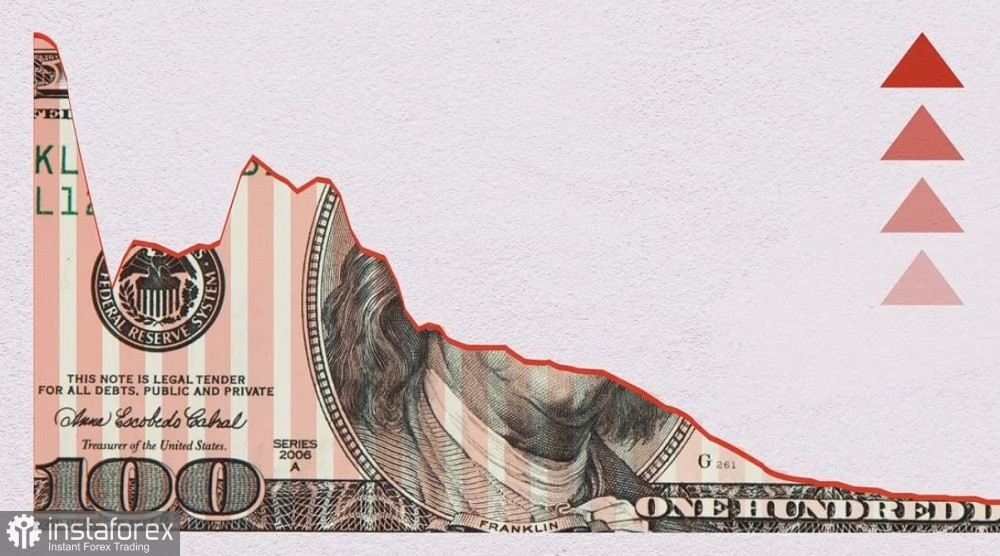Sellers of the EUR/USD pair failed to capitalize on the outcomes of the January FOMC meeting, which worked in favor of the dollar. The assault on the 1.07 level failed, barely beginning — on Thursday, the pair returned above the 1.0800 target, reflecting the bears' weak positions. The eurozone inflation report only added to the contradictory fundamental picture. The release was in the "green," but in reality, it left more questions than answers. EUR/USD traders are clearly discouraged by the current situation, so they are generally treading water within the 1.08 level. In such conditions, both buying and selling look equally risky.

On Thursday, we learned the preliminary estimate of eurozone inflation. As mentioned earlier, all components of the January report came out in the "green," although they reflected a slowdown in inflation. January's flash Consumer Price Index estimate of 2.8% was ahead of the expected 2.7%. Throughout the 7 months (from May to November inclusive), this indicator showed a consistent downward trend, reaching 2.4% year-on-year. However, in December, it unexpectedly accelerated to 2.9%. On the one hand, the January result indicates a slowing pace of growth, but on the other hand, it suggests that the pace of slowdown isn't enough. The core CPI declined for five consecutive months, and January became the sixth month in this series. But instead of the expected decrease to 3.2%, the indicator stood at 3.3%.
The report's structure indicates that energy prices saw a decline of 6.3% in January, versus -6.7% in December. The growth rates of the cost of food, alcohol, and tobacco decreased from 6.1% to 5.7%. Non-energy industrial goods slid to 2% from 2.5% in December. At the same time, inflation in the services sector remained at the same level, i.e., at 4%. Among the countries of the eurozone, the highest inflation on an annual basis was recorded in Estonia, Croatia, Slovakia, and Austria. The slowest growth in the CPI was observed in Finland, Italy, Lithuania, and Latvia.
So what do these figures indicate? Well, firstly, that eurozone inflation continues to demonstrate a downtrend. Secondly, inflation is decreasing at a slower pace than expected by most experts.
Will the "green tint" of the latest report influence the European Central Bank's position in the context of softening/tightening rhetoric? In the direction of easing – yes; in the direction of tightening – unlikely.
It is worth noting that after the latest report, expectations of an ECB rate cut at the April meeting are at 85%. At the same time, the market is 100% confident that the central bank will take a step to ease monetary policy in June.
So why are the bears being indecisive? In my opinion, the dollar is acting as a stopper here, essentially remaining "in the doldrums" following the FOMC's January meeting.
Recall that Fed Chair Jerome Powell explicitly refuted rumors that the central bank would lower interest rates at the next (March) meeting, but at the same time made it clear that it could happen at one of the subsequent meetings. The result was not long in coming: the probability of a rate cut to 5.25% in May is now at 56%. According to the CME FedWatch Tool, the likelihood of a rate cut to 5.0% is at 42%. As for the June meeting, the probability of a rate cut to 5.0% is estimated at 45%, to 4.75% - also at 45%. The chances of a rate cut to 4.5% are estimated at 10%. In other words, futures traders have fully priced in the easing of monetary policy in May and June. The only question is the extent of the rate cut.
Weak Non-Farm Payrolls (NFP) and, more importantly, a decline in key inflation indicators can strengthen the dovish sentiment among market participants. This is why traders basically ignored the latest ISM Manufacturing Index (although it ended up in the "green," rising to 49.1 instead of falling to 47.0) and significantly reacted to the ADP report, which turned out to be disappointing with its "red tint." Instead of the forecasted increase of 148,000, the employment change figure in January rose by only 107,000. If the official figure repeats this trajectory on Friday, the dollar could face more pressure (due to growing dovish sentiments in the market).
To sum up the situation, we came to the conclusion that the Fed did not act as an ally of the dollar. The US central bank only provided weak and, most importantly, temporary support to the dollar. The dovish expectations weakened only in the context of the March meeting; overall, the central bank indicated that it is heading towards easing monetary policy. The only question is when the first rate cut will occur – in May or June.
In such conditions of fundamental nature, it is impossible to speak about a sustainable downward movement in EUR/USD. This is precisely why the bulls seized the initiative by returning the pair to the 8th figure. However, they also need additional impetus to support an upward movement. The circle is closed.
From a technical perspective, on the daily chart, the pair is within the Kumo cloud, between the lower and middle Bollinger Bands lines, and also on the Tenkan-sen line. There are no clear "up" or "down" signals. Both buying and selling are risky at the moment, so it is advisable to stay out of the market until the Non-Farm Payrolls data is published.
 English
English 
 Русский
Русский Bahasa Indonesia
Bahasa Indonesia Bahasa Malay
Bahasa Malay ไทย
ไทย Español
Español Deutsch
Deutsch Български
Български Français
Français Tiếng Việt
Tiếng Việt 中文
中文 বাংলা
বাংলা हिन्दी
हिन्दी Čeština
Čeština Українська
Українська Română
Română

